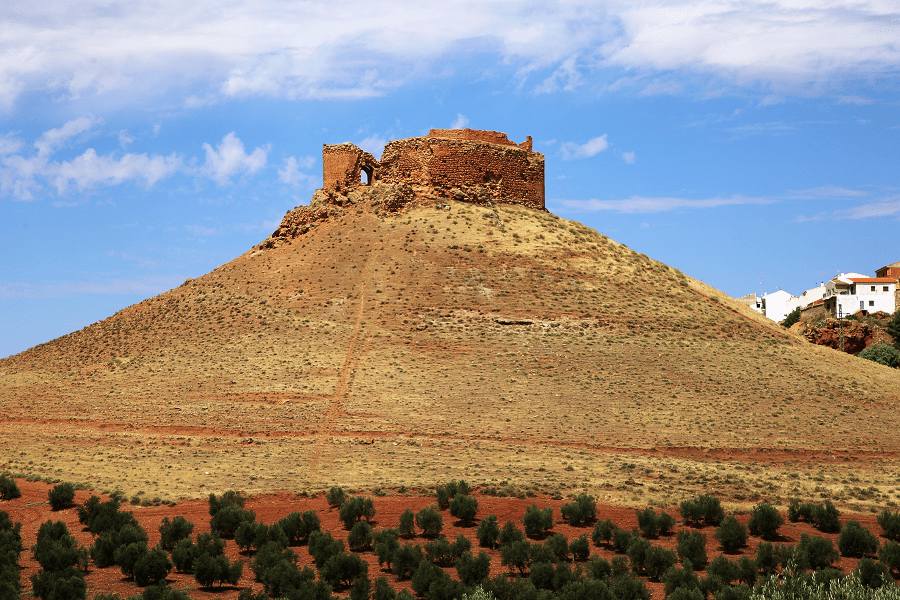The Alhambra castle (Sp. Castillo de Alhambra) is a military construction built in various phases between the 13th and 15th centuries in the Spanish town of Alhambra, belonging to the province of Ciudad Real, in Castilla-La Mancha.
It is believed that the Alhambra castle may have an Umayyad origin, although the preserved remains date from the 13th century. Shortly after 1085, once Toledo was taken, there were already battles in the vicinity of the Alhambra. Alfonso VII conquered the castle in the middle of the 12th century, and Ferdinand II gave it to the Order of Monte Gaudio, this donation being confirmed by Alexander III in 1180.
Located to the south of the town of the same name, the ruined castle of Alhambra stands on a bare hill, with a frusto-conical shape, just over 800 meters above sea level.
The plan of the fortress is oval, perfectly adapted to the top of the relief, and for this reason it did not require a moat around it, being a castle of what they call “montane”. Specifically, there are 14 sides that give shape to an oval that measures, according to the perimeter of its walls, around 100 meters.
GPS coordinates: 38°53′50″N 3°02′52″W
How to get to?
From Ciudad Real 57 min (89.5 km) via A-43 and N-430
From Almagro 59 min (66.4 km) via CM-4124 and N-430
From Valdepeñas 35 min (43.7 km) via CM-3109 and N-430











